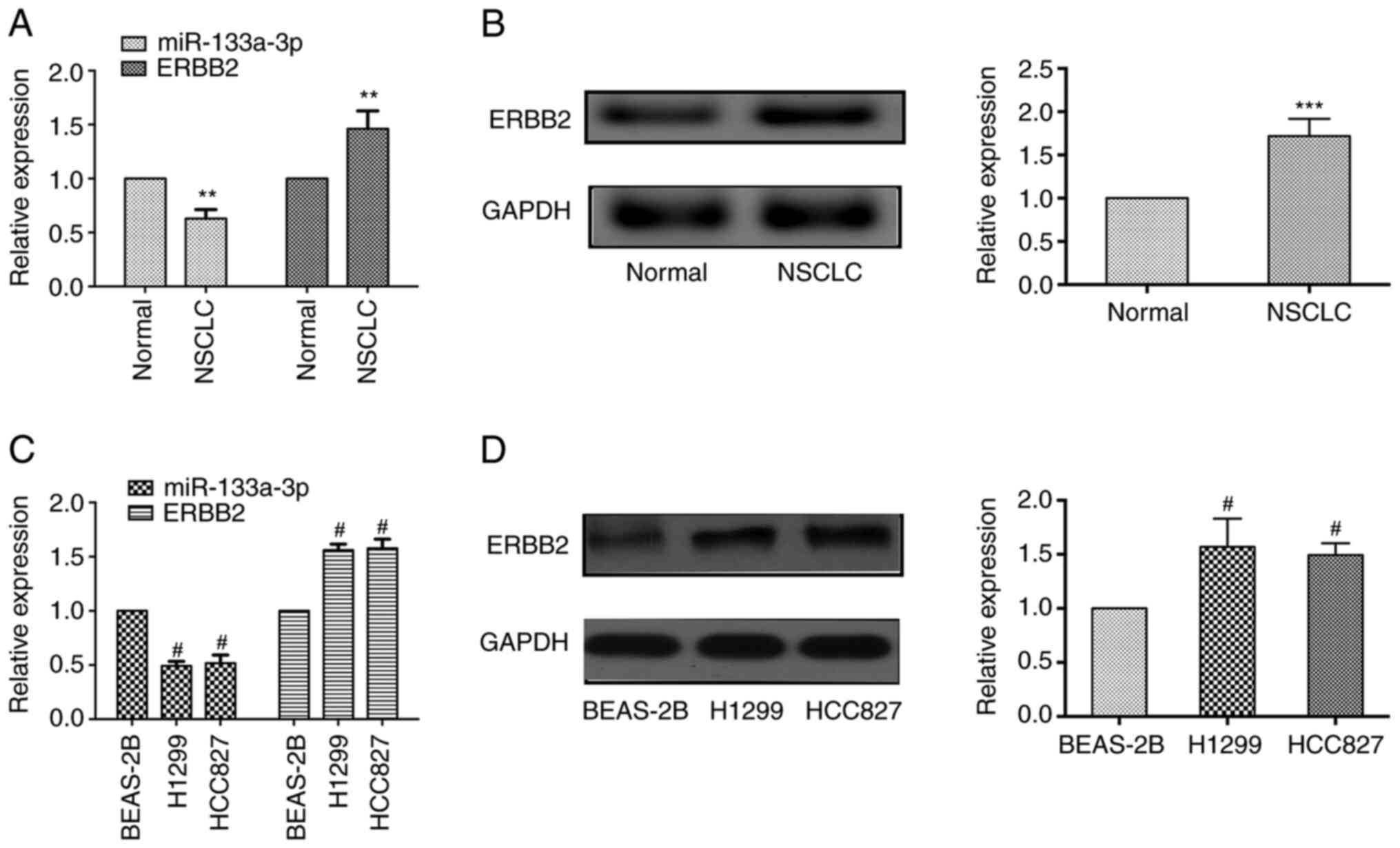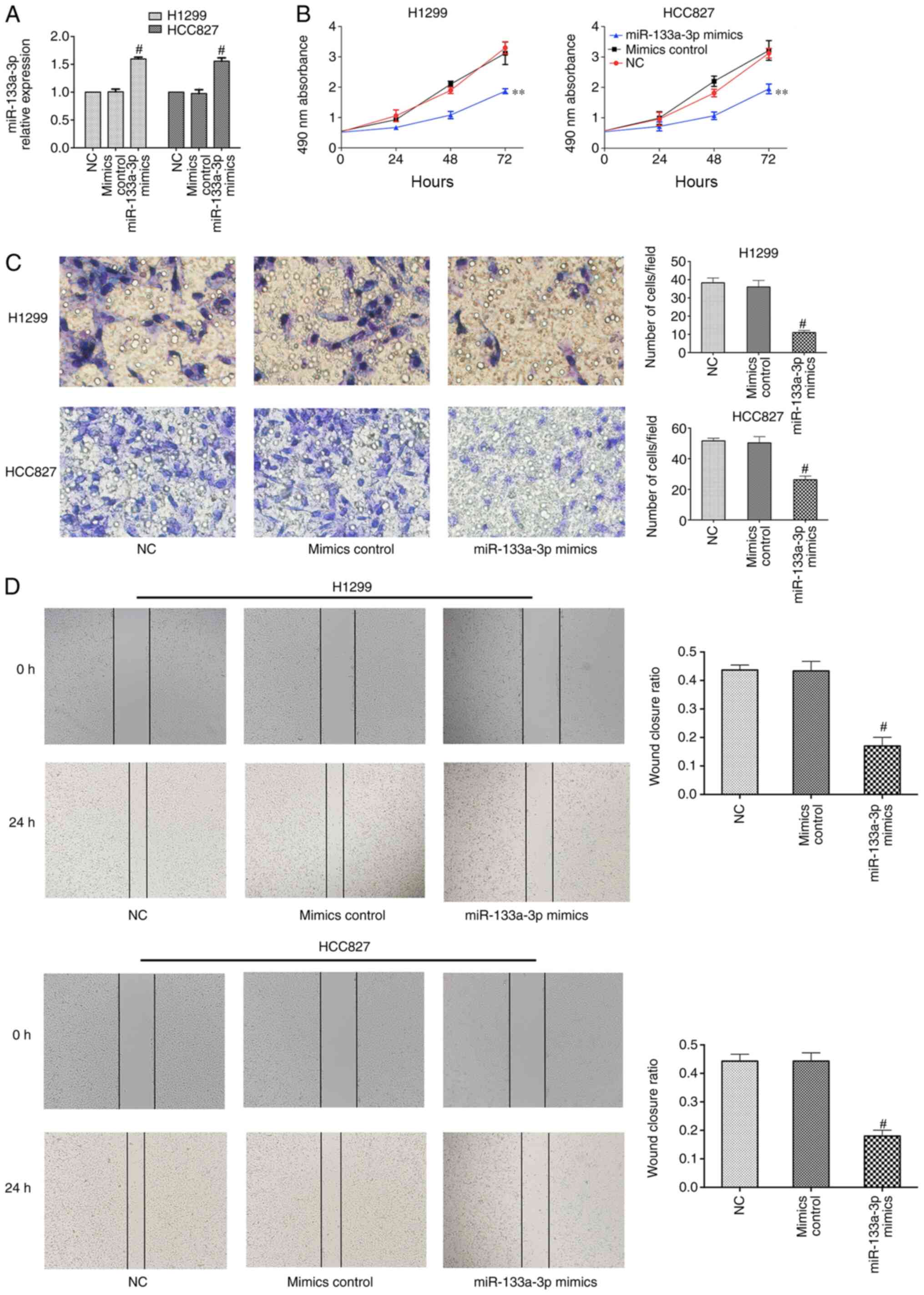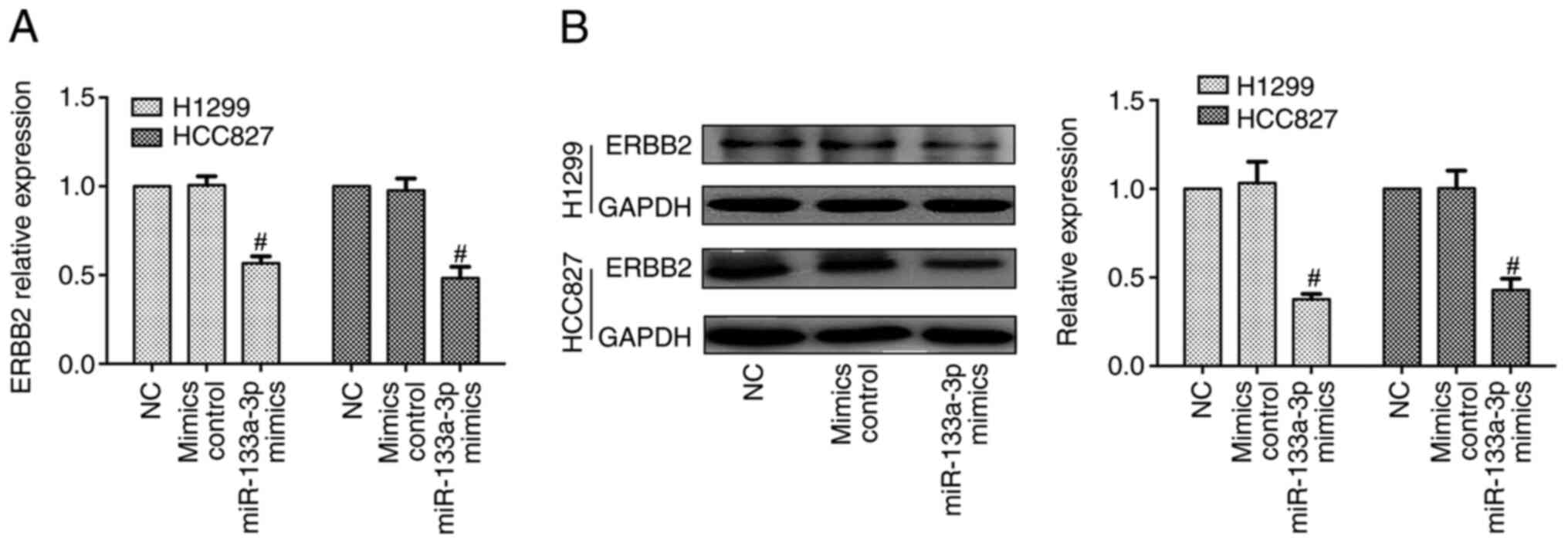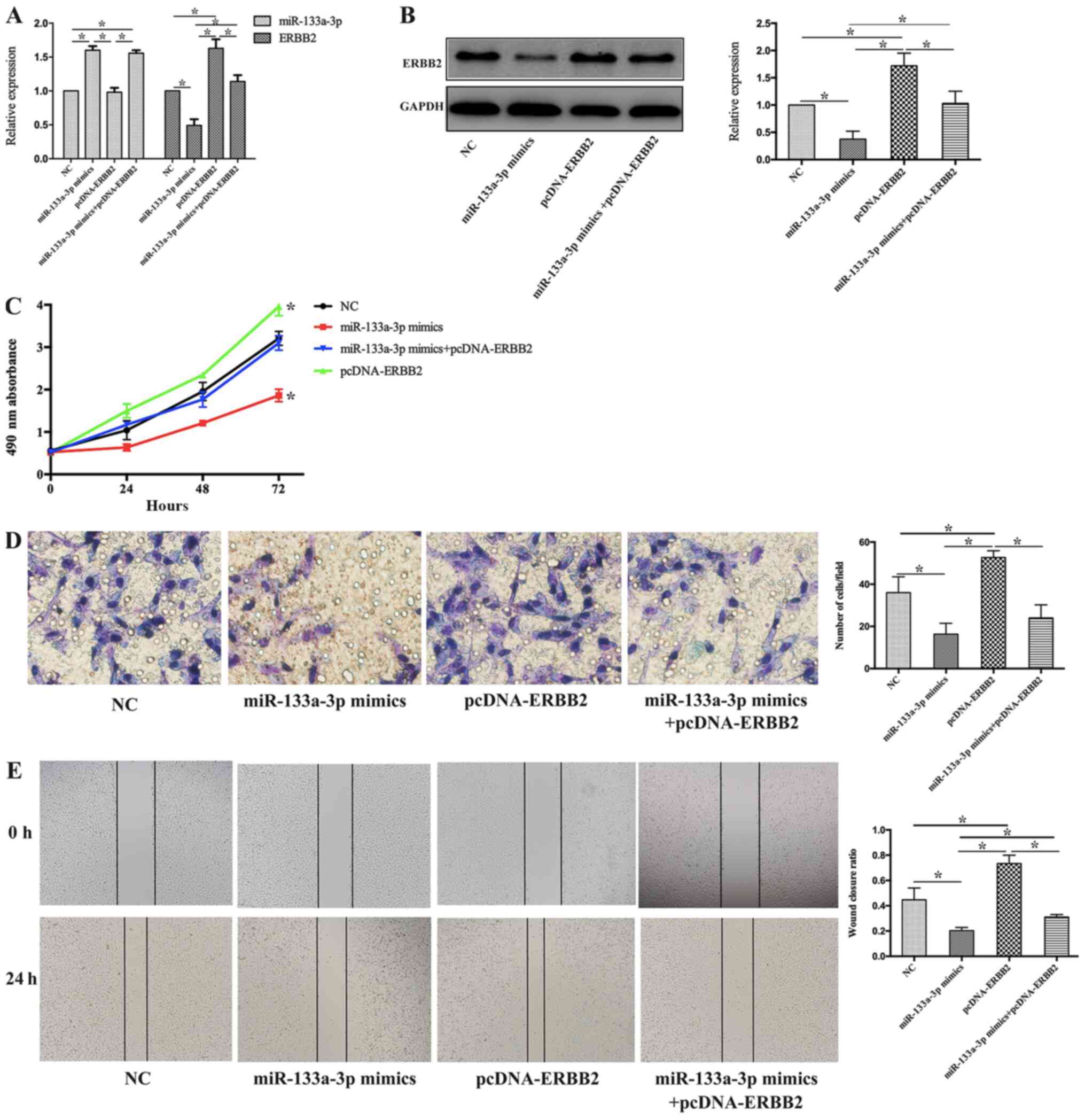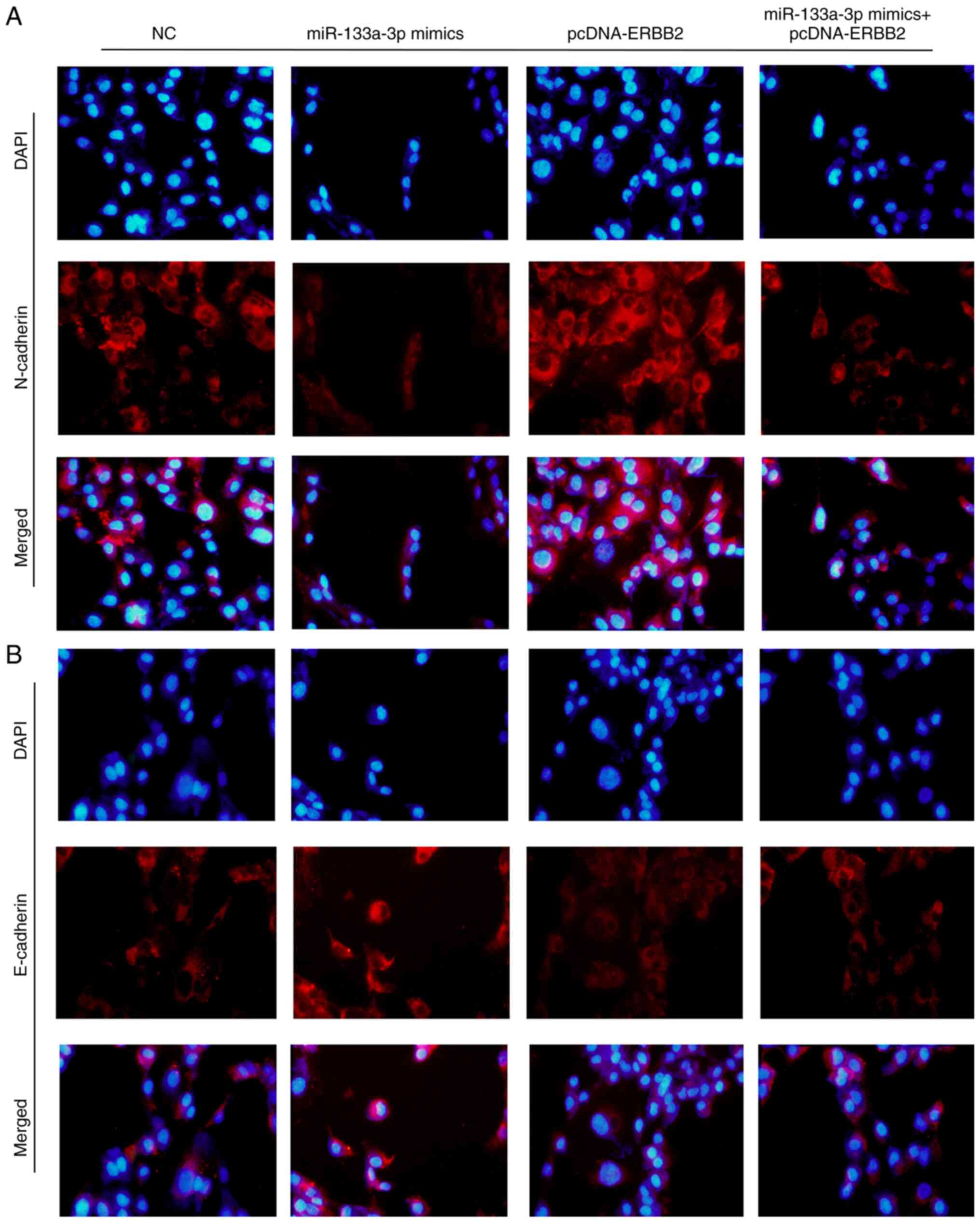|
1
|
Duffy SW and Field JK: Mortality reduction
with low-dose CT screening for lung cancer. N Engl J Med.
382:572–573. 2020. View Article : Google Scholar : PubMed/NCBI
|
|
2
|
Qi M, Dai D, Liu J, Li Z, Liang P, Wang Y,
Cheng L, Zhan Y, An Z, Song Y, et al: AIM2 promotes the development
of non-small cell lung cancer by modulating mitochondrial dynamics.
Oncogene. 39:2707–2723. 2020. View Article : Google Scholar : PubMed/NCBI
|
|
3
|
Siegel RL, Miller KD and Jemal A: Cancer
statistics, 2015. CA Cancer J Clin. 65:5–29. 2015. View Article : Google Scholar : PubMed/NCBI
|
|
4
|
Zhang H, Qian G, Zong D, Fan S, Owonikoko
TK, Ramalingam SS and Sun SY: Overcoming acquired resistance of
epidermal growth factor receptor-mutant non-small cell lung cancer
cells to osimertinib by combining osimertinib with the histone
deacetylase inhibitor panobinostat (LBH589). Cancer. 126:2024–2033.
2020. View Article : Google Scholar
|
|
5
|
Morgensztern D, Ng SH, Gao F and Govindan
R: Trends in stage distribution for patients with non-small cell
lung cancer: A national cancer database survey. J Thorac Oncol.
5:29–33. 2010. View Article : Google Scholar : PubMed/NCBI
|
|
6
|
Du L and Morgensztern D: Chemotherapy for
advanced-stage non-small cell lung cancer. Cancer J. 21:366–370.
2015. View Article : Google Scholar : PubMed/NCBI
|
|
7
|
Zhang Q, Zhou L, Guan Y, Cheng Y and Han
X: BENC-511, a novel PI3K inhibitor, suppresses metastasis of
non-small cell lung cancer cells by modulating β-catenin/ZEB1
regulatory loop. Chem Biol Interact. 294:18–27. 2018. View Article : Google Scholar : PubMed/NCBI
|
|
8
|
Yang ZY, Yang L, Xu CW, Wang XJ and Lei L:
An insertion mutation of ERBB2 enhances breast cancer cell growth
and confers resistance to lapatinib through AKT signaling pathway.
Biol Open. 9:bio0476622020. View Article : Google Scholar : PubMed/NCBI
|
|
9
|
Honkoop H, de Bakker DE, Aharonov A, Kruse
F, Shakked A, Nguyen PD, de Heus C, Garric L, Muraro MJ, Shoffner
A, et al: Single-cell analysis uncovers that metabolic
reprogramming by ErbB2 signaling is essential for cardiomyocyte
proliferation in the regenerating heart. Elife. 8:e501632019.
View Article : Google Scholar : PubMed/NCBI
|
|
10
|
Albrecht T, Rausch M, Rössler S, Albrecht
M, Braun JD, Geissler V, Mehrabi A, Vogel MN, Pathil-Warth A,
Mechtersheimer G, et al: HER2 gene (ERBB2) amplification is a rare
event in non-liver-fluke associated cholangiocarcinogenesis. BMC
Cancer. 19:11912019. View Article : Google Scholar : PubMed/NCBI
|
|
11
|
Menderes G, Bonazzoli E, Bellone S, Black
J, Altwerger G, Masserdotti A, Pettinella F, Zammataro L, Buza N,
Hui P, et al: SYD985, a novel duocarmycin-based HER2-targeting
antibody-drug conjugate, shows promising antitumor activity in
epithelial ovarian carcinoma with HER2/Neu expression. Gynecol
Oncol. 146:179–186. 2017. View Article : Google Scholar : PubMed/NCBI
|
|
12
|
Ahmed S, Sami A and Xiang J: HER2-directed
therapy: Current treatment options for HER2-positive breast cancer.
Breast Cancer. 22:101–116. 2015. View Article : Google Scholar : PubMed/NCBI
|
|
13
|
Li L, Jia L and Ding Y: Upregulation of
miR-375 inhibits human liver cancer cell growth by modulating cell
proliferation and apoptosis via targeting ErbB2. Oncol Lett.
16:3319–3326. 2018.PubMed/NCBI
|
|
14
|
Rimawi MF, Schiff R and Osborne CK:
Targeting HER2 for the treatment of breast cancer. Annu Rev Med.
66:111–128. 2015. View Article : Google Scholar : PubMed/NCBI
|
|
15
|
Xiang Z, Huang X, Wang J, Zhang J, Ji J,
Yan R, Zhu Z, Cai W and Yu Y: Cross-database analysis reveals
sensitive biomarkers for combined therapy for ERBB2+
gastric cancer. Front Pharmacol. 9:8612018. View Article : Google Scholar : PubMed/NCBI
|
|
16
|
Wu J, Li S, Ma R, Sharma A, Bai S, Dun B,
Cao H, Jing C, She J and Feng J: Tumor profiling of co-regulated
receptor tyrosine kinase and chemoresistant genes reveal different
targeting options for lung and gastroesophageal cancers. Am J
Transl Res. 8:5729–5740. 2016.PubMed/NCBI
|
|
17
|
Liang CH, Shiu LY, Chang LC, Sheu HM and
Kuo KW: Solamargine upregulation of Fas, downregulation of HER2,
and enhancement of cytotoxicity using epirubicin in NSCLC cells.
Mol Nutr Food Res. 51:999–1005. 2007. View Article : Google Scholar : PubMed/NCBI
|
|
18
|
Lu TX and Rothenberg ME: MicroRNA. J
Allergy Clin Immunol. 141:1202–1207. 2018. View Article : Google Scholar : PubMed/NCBI
|
|
19
|
Olejniczak M, Kotowska-Zimmer A and
Krzyzosiak W: Stress-induced changes in miRNA biogenesis and
functioning. Cell Mol Life Sci. 75:177–191. 2018. View Article : Google Scholar : PubMed/NCBI
|
|
20
|
Ohanian M, Humphreys DT, Anderson E,
Preiss T and Fatkin D: A heterozygous variant in the human cardiac
miR-133 gene, MIR133A2, alters miRNA duplex processing and strand
abundance. BMC Genet. 14:182013. View Article : Google Scholar : PubMed/NCBI
|
|
21
|
Zhang X, Li Z, Xuan Z, Xu P, Wang W, Chen
Z, Wang S, Sun G, Xu J and Xu Z: Novel role of miR-133a-3p in
repressing gastric cancer growth and metastasis via blocking
autophagy-mediated glutaminolysis. J Exp Clin Cancer Res.
37:3202018. View Article : Google Scholar : PubMed/NCBI
|
|
22
|
Gao L, Li SH, Tian YX, Zhu QQ, Chen G,
Pang YY and Hu XH: Role of downregulated miR-133a-3p expression in
bladder cancer: A bioinformatics study. Onco Targets Ther.
10:3667–3683. 2017. View Article : Google Scholar : PubMed/NCBI
|
|
23
|
He B, Lin X, Tian F, Yu W and Qiao B:
miR-133a-3p inhibits oral squamous cell carcinoma (OSCC)
proliferation and invasion by suppressing COL1A1. J Cell Biochem.
119:338–346. 2018. View Article : Google Scholar : PubMed/NCBI
|
|
24
|
Yang ZQ, Wu CA and Cheng YX: Prognostic
value of microRNA-133a expression and its clinicopathologic
significance in non-small cell lung cancer: A comprehensive study
based on meta-analysis and the TCGA database. Oncol Res Treat.
41:762–768. 2018. View Article : Google Scholar : PubMed/NCBI
|
|
25
|
Livak KJ and Schmittgen TD: Analysis of
relative gene expression data using real-time quantitative PCR and
the 2(-Delta Delta C(T)) method. Methods. 25:402–408. 2001.
View Article : Google Scholar : PubMed/NCBI
|
|
26
|
Tian L, Chen M, He Q, Yan Q and Zhai C:
MicroRNA-199a-5p suppresses cell proliferation, migration and
invasion by targeting ITGA3 in colorectal cancer. Mol Med Rep.
22:2307–2317. 2020. View Article : Google Scholar : PubMed/NCBI
|
|
27
|
Gamerith G, Kocher F, Rudzki J and Pircher
A: ASCO 2018 NSCLC highlights-combination therapy is key. Memo.
11:266–271. 2018. View Article : Google Scholar : PubMed/NCBI
|
|
28
|
Tian Y, Sun C, Zhang L and Pan Y: Clinical
significance of miRNA-106a in non-small cell lung cancer patients
who received cisplatin combined with gemcitabine chemotherapy.
Cancer Biol Med. 15:157–164. 2018. View Article : Google Scholar : PubMed/NCBI
|
|
29
|
Hu Y, Liu C and Muyldermans S:
Nanobody-based delivery systems for diagnosis and targeted tumor
therapy. Front Immunol. 8:14422017. View Article : Google Scholar : PubMed/NCBI
|
|
30
|
McGuire A, Brown JA and Kerin MJ:
Metastatic breast cancer: The potential of miRNA for diagnosis and
treatment monitoring. Cancer Metastasis Rev. 34:145–155. 2015.
View Article : Google Scholar : PubMed/NCBI
|
|
31
|
Shin VY and Chu KM: miRNA as potential
biomarkers and therapeutic targets for gastric cancer. World J
Gastroenterol. 20:10432–10439. 2014. View Article : Google Scholar : PubMed/NCBI
|
|
32
|
Takahashi RU, Prieto-Vila M, Kohama I and
Ochiya T: Development of miRNA-based therapeutic approaches for
cancer patients. Cancer Sci. 110:1140–1147. 2019. View Article : Google Scholar : PubMed/NCBI
|
|
33
|
Shi W, Tang T, Li X, Deng S, Li R, Wang Y,
Wang Y, Xia T, Zhang Y, Zen K, et al: Methylation-mediated
silencing of miR-133a-3p promotes breast cancer cell migration and
stemness via miR-133a-3p/MAML1/DNMT3A positive feedback loop. J Exp
Clin Cancer Res. 38:4292019. View Article : Google Scholar : PubMed/NCBI
|
|
34
|
Li JP, Zhang HM, Liu MJ, Xiang Y, Li H,
Huang F, Li HH, Dai ZT, Gu CJ, Liao XH and Zhang TC:
miR-133a-3p/FOXP3 axis regulates cell proliferation and autophagy
in gastric cancer. J Cell Biochem. 121:3392–3405. 2020. View Article : Google Scholar : PubMed/NCBI
|
|
35
|
Byeon S, Lee B, Park WY, Choi YL, Jung HA,
Sun JM, Ahn JS, Ahn MJ, Park K and Lee SH: Benefit of targeted DNA
sequencing in advanced non-small-cell lung cancer patients without
EGFR and ALK alterations on conventional tests. Clin Lung Cancer.
21:e182–e190. 2020. View Article : Google Scholar
|
|
36
|
Liberelle M, Jonckheere N, Melnyk P, Van
Seuningen I and Lebègue N: EGF-containing membrane-bound mucins: A
hidden ErbB2 targeting pathway? J Med Chem. 63:5074–5088. 2020.
View Article : Google Scholar : PubMed/NCBI
|
|
37
|
Voelker R: Another targeted therapy for
ERBB2-positive breast cancer. JAMA. 323:4082020. View Article : Google Scholar
|
|
38
|
Spencer KS, Graus-Porta D, Leng J, Hynes
NE and Klemke RL: ErbB2 is necessary for induction of carcinoma
cell invasion by ErbB family receptor tyrosine kinases. J Cell
Biol. 148:385–397. 2000. View Article : Google Scholar : PubMed/NCBI
|
|
39
|
Jung DH, Bae YJ, Kim JH, Shin YK and Jeung
HC: HER2 regulates cancer stem cell activities via the Wnt
signaling pathway in gastric cancer cells. Oncology. 97:311–318.
2019. View Article : Google Scholar : PubMed/NCBI
|















